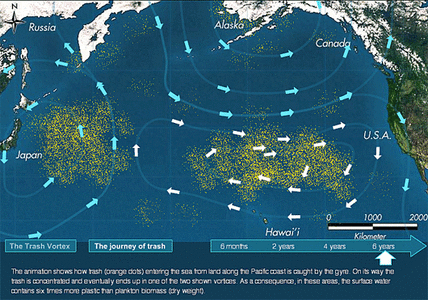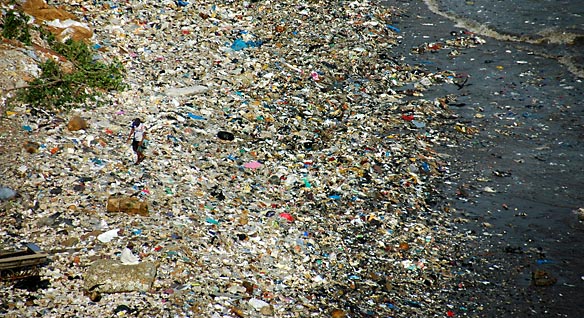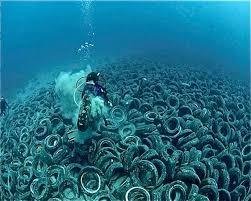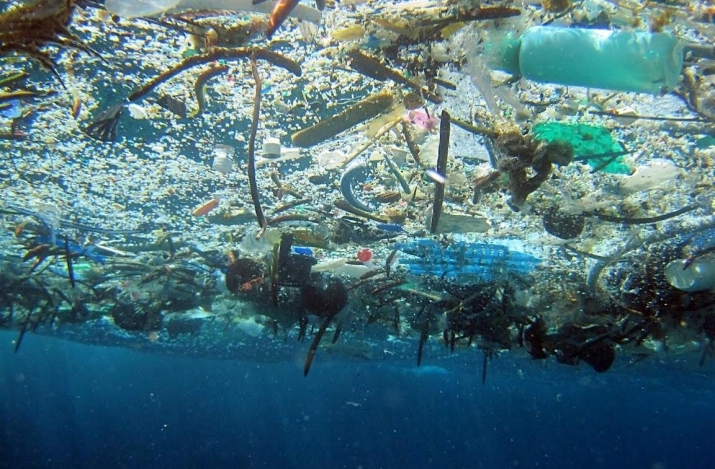But midway is also at the center of the great pacific garbage patch a vast area of floating plastic collected by circulating oceanic currents.
Satellite birds eye view great pacific garbage patch.
It s the poster child for a worldwide problem.
The good news it s not a literal island in fact the debris concentration is low enough that it s effectively invisible from the air.
The great pacific garbage patch stretches for hundreds of miles across the north pacific ocean forming a nebulous floating junk yard on the high seas.
The collection of plastic and floating trash originates from the pacific rim including countries in asia north america and south america.
Common among the trash were soap bottles dish soap mainly floating on the surface of the water here and there as gentle swells caressed them the sun having bleached them bone white decaying labels hanging off in leprous flakes their composition made to contain their toxic contents now insuring.
One is the western garbage patch near japan and the other is.
It s a vortex of trash.
The great pacific garbage patch is the largest accumulation of ocean plastic in the world and is located between hawaii and california.
But the bad news is bad enough.
The main constituents of this garbage are plastic debris that the ocean currents collect.
The hawaiian islands act like a comb that gathers debris as it floats across the pacific.
Tweetshare41sharepin the great pacific garbage patch is a gigantic collection of marine debris and waste found in the middle of the north pacific ocean.
Birds eye view circus 2413 collingwood blvd toledo oh 43620 birds eye view bed breakfast 8226 kaster dr ne bremerton wa 98311 birds eye view productions 1761 county road h deer park wi 54007 bird s eye view aerial 10906 denoeu rd boynton beach fl 33472 legal.
A recent analysis found that the patch is accumulating debris at a faster rate than scientists previously thought.
The gyre is divided into two areas the.
Subscribe to our chan.
The garbage patch is located within the north pacific gyre one of the five major oceanic gyres.










